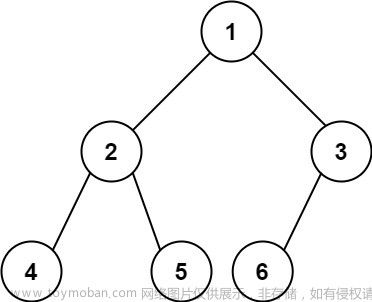- Most Frequent Subtree Sum
Solved
Medium
Topics
Companies
Given the root of a binary tree, return the most frequent subtree sum. If there is a tie, return all the values with the highest frequency in any order.
The subtree sum of a node is defined as the sum of all the node values formed by the subtree rooted at that node (including the node itself).
Example 1:
Input: root = [5,2,-3]
Output: [2,-3,4]
Example 2:
Input: root = [5,2,-5]
Output: [2]
Constraints:
The number of nodes in the tree is in the range [1, 104].
-105 <= Node.val <= 105文章来源:https://www.toymoban.com/news/detail-836987.html
解法1:用后序遍历!文章来源地址https://www.toymoban.com/news/detail-836987.html
/**
* Definition for a binary tree node.
* struct TreeNode {
* int val;
* TreeNode *left;
* TreeNode *right;
* TreeNode() : val(0), left(nullptr), right(nullptr) {}
* TreeNode(int x) : val(x), left(nullptr), right(nullptr) {}
* TreeNode(int x, TreeNode *left, TreeNode *right) : val(x), left(left), right(right) {}
* };
*/
class Solution {
public:
vector<int> findFrequentTreeSum(TreeNode* root) {
helper(root);
vector<int> res;
for (auto elem: um) {
if (maxFreq == elem.second) {
res.push_back(elem.first);
}
}
return res;
}
private:
map<int, int> um; //<sum, freq>
int maxFreq = 0;
int helper(TreeNode* root) {
if (!root) return 0;
int left = helper(root->left);
int right = helper(root->right);
int sum = left + right + root->val;
um[sum]++;
if (maxFreq < um[sum]) {
maxFreq = um[sum];
}
return sum;
}
};
到了这里,关于Leetcode 508. Most Frequent Subtree Sum (二叉树后序遍历好题)的文章就介绍完了。如果您还想了解更多内容,请在右上角搜索TOY模板网以前的文章或继续浏览下面的相关文章,希望大家以后多多支持TOY模板网!













